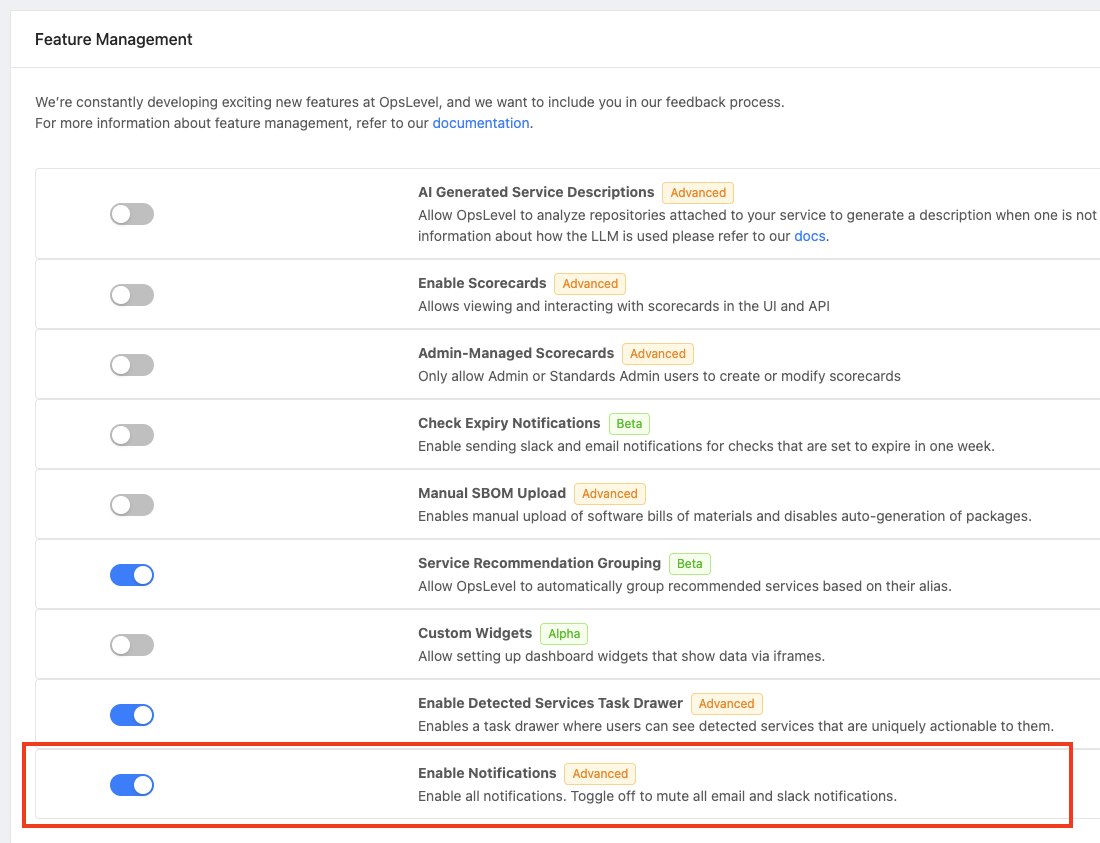Inviting Users
Overview
This feature allows you to manually invite users into OpsLevel and determine when to notify them via email. It is particularly useful during the onboarding process, where you may want to import users, structure teams, and assign ownership to components in your catalog before rolling OpsLevel out to the rest of your organization.
Key Features
-
Manual Invitations: Invite users by entering their name, email, role, and click the
Create and Send Invvitebutton. This will send an email invitation to the user. -
Batch Invitations: If you have multiple users to invite at once, you can use the
Send Invites to All Usersbutton. This sends invitations to all the users that have been added but haven't signed in yet. -
Notification Control: During onboarding, you may wish to prevent users from receiving notifications until they are fully set up. To facilitate this, we’ve introduced a feature that allows you to disable all notifications temporarily. This option is available under
Feature Managementon the Account Settings page asEnable Notifications. Toggling this off mutes all email and Slack notifications for your users, including invite emails sent via SCIM or other automated API processes. Once you are ready, you can manually send the invitations and notifications as needed.

How to Invite Users
UI
- Navigate to the Users page under the People sidebar menu item.
- In the User List section, enter the user's name and email address.
- Select the desired role from the dropdown menu.
- Click
Create & Send Inviteto send the invitation immediately.

Alternatively, if you wish to send invitations at a later time:
- To bulk send notifications to all of the users that haven't signed in, use the
Send Invites to All Users - To send a notification to an individual user, use the
Send Invitebutton under the correct user's row

API
To invite an existing OpsLevel user who has not yet signed in, use the bulk usersInvite mutation:
mutation inviteUsers {
usersInvite(input: { users: [{ id: "Z2lkOi8vb3BzbGV2ZWwvVXNlci84Mzc" }] }) {
users {
id
name
}
failed
}
}This mutation accepts a list of users, which can be identified by id or email. Alternatively, you can pass scope: pending to invite all users who haven't signed in yet.
To create net new users in OpsLevel, use the userInvite mutation:
mutation inviteUser {
userInvite(
email:"[email protected]",
input: { name: "New User" })
{
user {
id
name
email
}
}
}This mutation respects the enable_notifications feature, so it will not send an email invite if email_notifications is toggled off. This allows you to set up any user provisioning automation and populate your catalog without sending out invites until you are ready to roll your catalog out to the rest of your organization.
Managing Notifications
- Disable Notifications: To disable all notifications during the onboarding process, go to
Feature Managementand toggle off theEnable Notificationsoption. This ensures that no email or Slack notifications are sent until you toggle the feature back on. - Re-enable Notifications: Once setup is complete, re-enable notifications by toggling the
Enable Notificationsoption back on.
This feature ensures that you can set your catalog up, including users, teams, and ownership, without overwhelming users with notifications. It also allows you to decide when to roll OpsLevel out to the remainder of your organization.
Updated about 1 month ago
